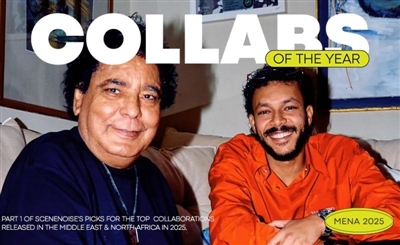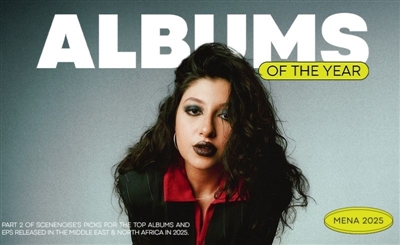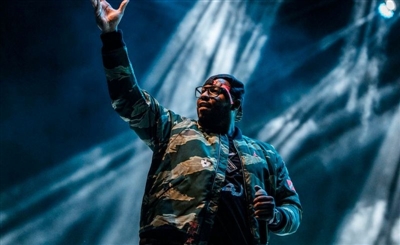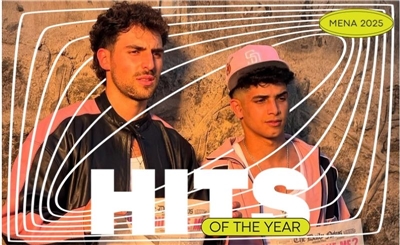Reclaiming Culture & Aestheticising Nostalgia: Issam Harris & Moroccan Rap’s New Frontier
Despite still to even release a first album Morocco's ISSAM has, in the last two years, stood as a symbol of his home country's burgeoning rap scene, as well as that of its North African neighbours. But what is it about the artist that has drawn in millions of views online? How has he found himself on the cusp of an international breakthrough? We speak to the man himself.

Ever since the release of 2018’s ‘Trap Beldi’, Moroccan
rapper, ISSAM (Issam Harris), has become a pioneer of something only he could
see and translate; as if he has finally been able to find the correct term for
something people had been trying to define for quite a while. His national
football team jersey with bleached jeans, Raï-inspired melodies on trap beats
and image composition inspired by vintage family photos have become
representatives of a trend that is now becoming a hot new currency in art and
creative circles as much as emblems of his work and style. This renaissance of
North African Arabian aesthetics as seen in urban centres in the modern day -
contrasting with the desert paradise representation typical of the region - is
now manifesting in many of the Arab world’s indie scenes, especially in rap/hip-hop;
a new frontier only recently being rediscovered. At face value, it amounts to a
subtle change or addition to creative processes, but in historical context,
it’s very likely that ISSAM has stumbled upon the next big development in Middle
Eastern hip-hop.
For most of rap/hip-hop’s history, English speaking
acts (mostly Americans) have been leading the scene, i.e. internationally. It
was (and is still for the most part) their domain and considered the ideal of
which all other local scenes are a mere replica. The difference is that,
whereas the playlists of most rap fans in the world consisted mainly of American
artists, the local scenes were considered just that; a local scene, with lesser
quality, with the exception of some scenes having a regional outreach (French
rap in North Africa, as well as some Spanish and Italian acts). The recent era,
however, is marked by decentralisation of production and distribution, and the global
reach of international (non-English speaking) acts, keeping in mind that the
edge that English-speaking rap has is that it caters to a giant market, almost
saturated with local acts.
In this regard, some Middle Eastern hip-hop scenes are
interesting for two main reasons, the first being that they it never had a
tradition of record-selling artists or professional infrastructure and platform; they
went straight to digital, but are already giving birth to some rising names,
despite being in their relative infancy. It was only recently, however, that artists
began to reach global markets (these scenes being comprised mostly of
independent artists), notably ISSAM, who recently signed a record deal with
Universal France, considered the biggest signed by an Arab hip-hop artist. Contrasting
with other local rap acts such as Lmoutchou, Shayfeen and Dizzy Dros - the
first Moroccan rap generation to generate major local notoriety almost
competing with international acts over the attention of local audiences - ISSAM is expected to be the first Moroccan rapper to break globally; and all this
over a handful of YouTube videos. His first album is yet to even be released.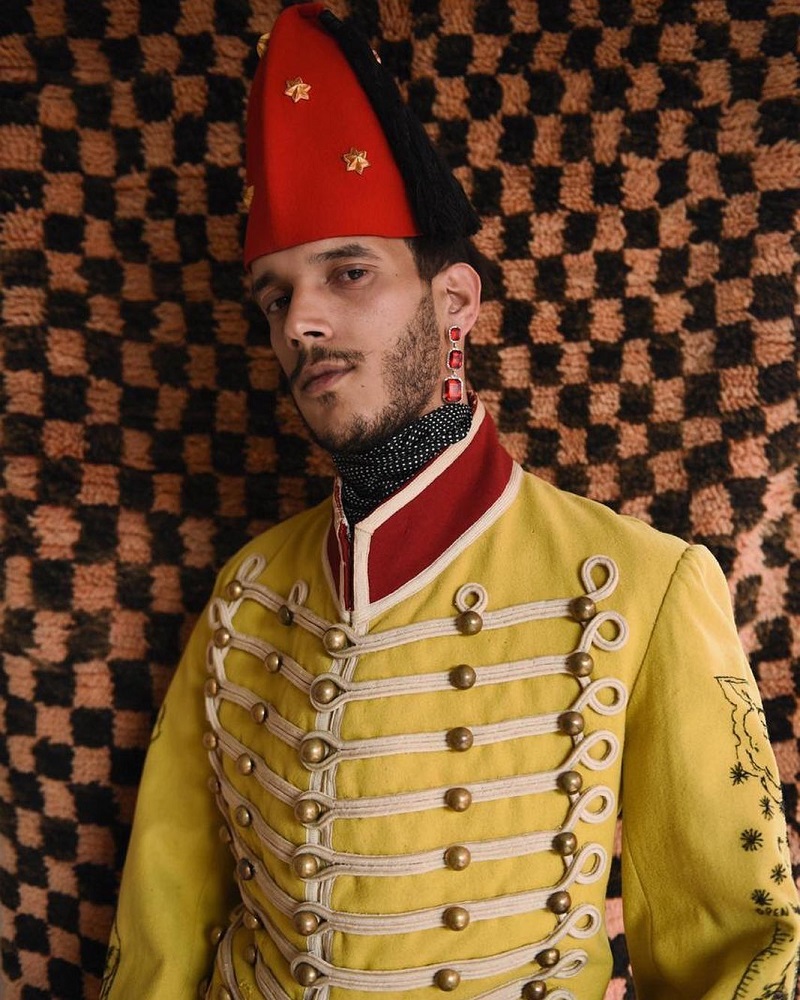
The current state of hip-hop is now far more diverse internationally
than it was a few years ago, as it is no longer entirely dependent on the
hegemony of English-speaking acts. Hip-hop has now almost embedded itself as a
significant part of local arts and culture in many parts of the world, to a
point where there no longer seems to be anything ‘foreign’ about it. As new
artists keep emerging and experimenting (a historical process to say the
least), the way we think about hip-hop is bound to change, and is now
considered a global non-cultural phenomenon. Perhaps in the future, we will be
looking at hip-hop arts (specifically rap) in the same way we look at tragedy,
drama or even the novel; a separate art form, with each local scene manifesting
its own original sensitivities and local touch.
<iframe width="800" height="450" src="https://www.youtube.com/embed/pcpAh78saoo" frameborder="0" allow="accelerometer; autoplay; encrypted-media; gyroscope; picture-in-picture" allowfullscreen></iframe>
Despite regional hip-hop scenes being nascent, the
early steps of this integration have manifested since its inception. Rap was
almost immediately written and performed in the local dialect and has been done
so for the entirety of its timeline. Because of that, local acts have begun to
gain the attention of local audiences and media. However, these scenes are
still discovering their range, and only recently making major breakthroughs.
The significance of ISSAM’s work is taking, and even
highlighting for other artists, the next step in this development in a way that
it has become synonymous with his visual and musical style (originality is a
key word here). The development of indie contemporary art scenes anywhere seems
to follow a certain pattern, as the success of each of these scenes is entirely
dependent on its local notoriety. There’s this elusive idea that a local
product(ion) will almost always, if done well, have more impact than an
international/foreign one, largely due to identity and cultural subtleties. The
accurate depiction or representation of a certain experience is what makes a
great work of art. These independent scenes continue to make more impact,
locally, as they lean more and more towards local cultural and aesthetic
elements, case in point, the renaissance of the Arabian aesthetic in local
contemporary arts; a trend of which ISSAM is now becoming the poster child.
The entire aesthetic message present in ISSAM’s work
can be summarised in recurrent symbol; the Algerian Raï legend, Cheb Hasni, who
is reclaimed in ISSAM’s work as a symbol of what a North African artist can be.
Hasni is a towering figure in most of North Africa, emblematic of the late 80s
and early 90s. A spokesperson of a generation of North Africans who saw the
opening of local markets to foreign products and ideas, the influence of the
latter and the changes caused by the development of the tech industry. When
asked about his fascination with Hasni, ISSAM says his music evokes childhood
memories. “His music is more intuitive than conceptual. It was more subdued, better
listened to attentively, than danced or vibed to,” ISSAM told SceneNoise. “Everything
from the instrumental to his voice and the effects used let you in into his
inner reality and feelings."
Cheb Hasni, Morocco
Hasni was probably the last of such regional/local acts
to gain major local notoriety amongst people of different backgrounds and
musical tastes. ISSAM reclaims him as a novelty, a piece of history representative
of an idea that defines him as an artist. “His touch is similar to the artistic
direction I chose; a mix between this Hasni effect and a more universal sound,
rendering a feel that I find quite distinct and recognisable, even to audiences
that are more used to European and American rap,” ISSAM continued,
Perhaps the most used word to describe ISSAM’s work,
when compared to other Moroccan rappers, is that it’s ‘original’, used in this
context in its most literal sense. A lot of this has to do with the standard
apologetic clichéd statement of rappers justifying their work, which is that
rap is music used to draw attention to the everyday reality of marginalised
communities - generally used by mainstream media catering to a predominantly
middle-aged and conservative audience, like in most countries of the Arab
world. This motif was in fact the original mission statement of hip-hop and
became sort-of second nature and rarely mentioned explicitly, as the art
developed aesthetically; art works in general are not straight forward, and are
more aesthetic than didactic. ISSAM’s take on this statement, however, is
purely aesthetic. He takes inspiration from what surrounds him; the famous Derb
Sultan in Casablance is often mentioned in his songs. “Most of the time, we
overlook many of the things around us that we take for granted, which could
really inspire us if seen under a different lens.” said ISSAM. “I think this
differentiates fads from art works that survive the test of time and somehow an
artist’s career.”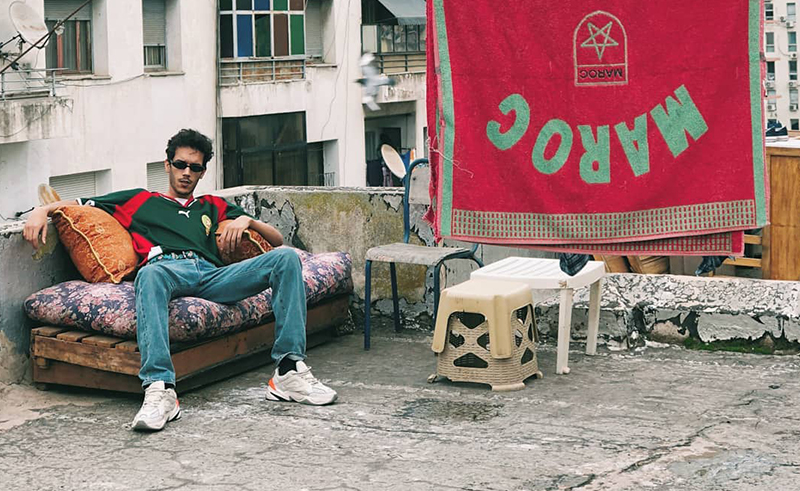
Whereas the most common tropes in rap are either bragging or
danger, ISSAM delivers an honest and vulnerable take on the statement of ‘depicting
everyday reality’; melancholy, nostalgia and sometimes even helplessness of
those who feel somehow left behind from the great development of the modern
world. His songs resonate with the many over the more sombre and often
overlooked aspects of the Moroccan experience, all the while reclaiming the
aesthetic quality of that same environment as the new cool; old tenant
buildings, pot plants on rooftops, Peugeot 103, Morocco’s national football team
jersey over bleached jeans, satellite dishes clustered across rooftops and 90s tracksuits. This is an
aesthetic statement that defies the consumerist culture prevalent in much of
hip-hop.
This contrast was expressed in much of his songs, but
mostly in his latest releasee, entitled quite appropriately, ‘NIKE’. The
obsession with brands and household names is pretty much a culture in many
parts of the world, each with its own interpretations. In Morocco, and perhaps
in most of the Arab world and third world, there is a loose belief, one with
historical significance, that a foreign product is inherently superior compared
to local ones, which could hold true sometimes. This argument, however, extends
beyond trade, redefining the relation between consumer and product, be it
clothing, food, ideas and even art. It extends to the belief that the local is
of lesser quality, and simply a rustic and unpolished version of the clean,
minimalistic and immaculate design of the modern age.
<iframe width="800" height="450" src="https://www.youtube.com/embed/i_T2V8ahNWw" frameborder="0" allow="accelerometer; autoplay; encrypted-media; gyroscope; picture-in-picture" allowfullscreen></iframe>
ISSAM’s play with the visual aesthetic is a new
representation of the modern Arab/North African, taking inspiration from
something no one before thought could be merged with hip-hop. It comes off as a
timely development of Moroccan culture, but not just a replication of something
done abroad that somehow signifies modern. The joy of watching and listening to
ISSAM’s work is seeing the urban/visual aesthetic you’re most familiar with
depicted in an appealing and contemporary way, conforming to today’s standards
in a very Cézanne-like and non-touristy way. Even musically, his greatest
tracks are often a whole new genre based on vintage North African sounds in the
same way the sounds of blues, jazz and funk constituted the basis of early rap
tracks in the US. In this sense, his work is probably the most beautiful
(contemporary) homage to Moroccan culture.
This is an element that has been neglected for quite
some time, and until recently considered the very definition of lowbrow. Recently,
the work of artists like Hassan Hajjaj, Rebel Spirit, Lalla Essaidi, and even
Issam, has changed that. This aesthetic has now become the new hot currency
sought by big productions, curators and art galleries appealing to the more highbrow
tastes. Surprisingly, this aesthetic of old packages for old brands, pattern
and strip-based colourful designs are what comes up when we think of a purely
Moroccan visual aesthetic. It’s an aesthetic that doesn’t necessarily re-affirm
the cliché of camel rides in the desert and busy souk alleys; something
reminiscent of the 80s and 90s aesthetic, hence the nostalgia. “For the moment,
there isn’t much competition on this side,” ISSAM explains. “Exceptions like
Hassan Hajjaj and others are constantly developing their craft and generating
interest in their work - and consequently the culture and the aesthetic abroad.
This I believe is more common in contemporary photography, but not really in
music. Moroccan rap, and music in general, didn’t make much effort to further
explore what is locally and culturally ours. We’re still inspired by the
international music, art and fashion scene. It is no surprise then that our
cultural aesthetic hasn’t develop much in the arts.”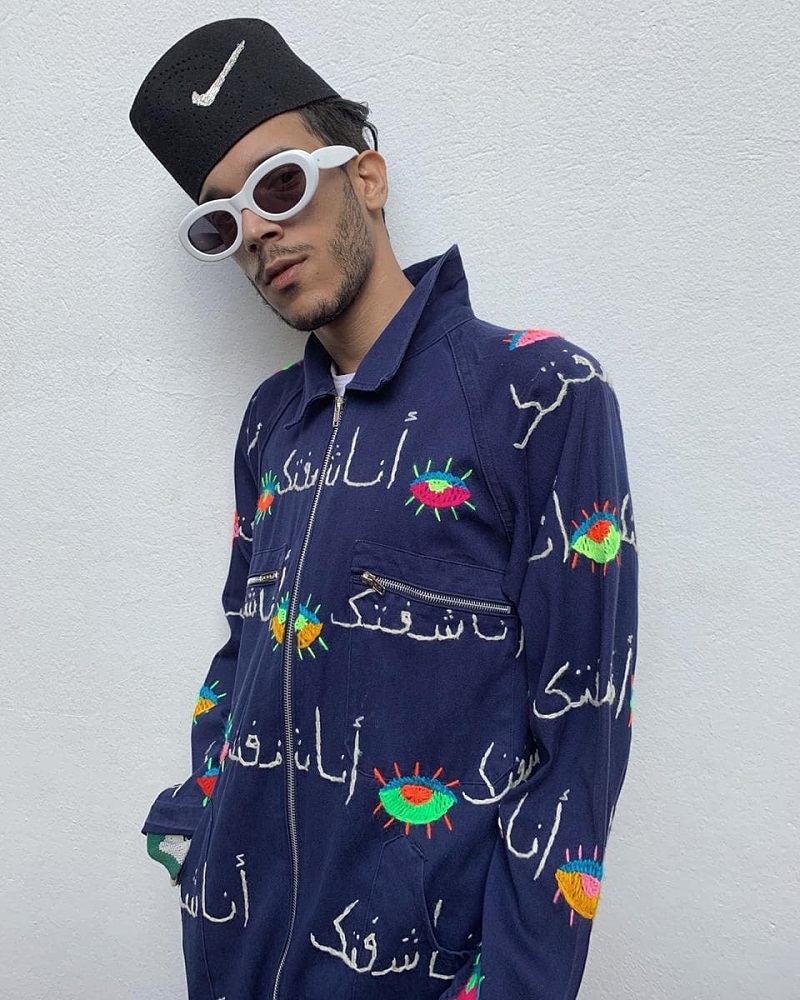
It’s these types of artistic choices, ones that
disregard the current trends and tap into something almost unseen, that made ISSAM
so relevant in such a short while. Despite having released only a handful of
videos, people understand what he refers to, and it resonates. These breaks
from the norms of old media not only create a new outlet, but make the next big
development. For this reason, the lack or avoidance of any mediating authority
by these artists (record label, radio stations, TV, distributors) may seem like
a blessing in disguise. On the downside, however, these same artists would find
no existing platform to produce and distribute their work, often having to
build from scratch, and handle multiple aspects of their projects - from
writing, production and mastering, to promotion, management, social media and
so on.
“In Morocco, it’s much more lucrative to invest in,
say, housing or manufacturing. We rarely invest in things like cultural
projects or scientific research,” says Ham Robati, creative director in ISSAM’s
team. “Artists alone are not enough to sustain the scene, let alone the whole
artistic industry. The same goes for media, specifically outlets focused on
arts and culture, platforms, collaboration spaces, venues, agencies and
everything in between.” Though in many cases this is symptomatic of a badly-structured
or nascent ‘market’, the technological advancement of the last decade has
greatly changed creative and artistic processes in general, as well the way people
consume media content and art.
In a way, ISSAM realised that, for an idea as broad as
the modern representation of Moroccan culture, it’s way more subtle to be
conveyed only musically. This aesthetic he is going for is quite distinct from
the standard regional one. In addition, the openness to multiple mediums or
forms is one of the hallmarks of how the artist’s notion changed in the digital
age, which ISSAM has adapted nicely to. Hip-hop videos are generally
predictable in terms of aesthetics, though each period has its trends and
innovations, both artistic and technical (consider the camera shake or Fake
Robot camera movement in Humble and Sicko Mode, the glitch
transition effect in many of ASAP Rocky’s videos, and the Cyberpunk neon colour
palette in New Freezer, LSD and other videos). Granted, there are
many well-produced music videos coming out of the local scene, but very few
have thought of it as an extension of the main element: the music. In part,
this is due ISSAM’s background as a fashion photographer; his videos function
as inseparable part of the songs, doing more than just accompanying the music. In
fact, they are just as integral to his ‘body of work’. At its greatest moments,
ISSAM’s work is more than just an aesthetic statement, rather a redefinition of
artists like him, relying mostly on the internet and digital media to build
their platform. 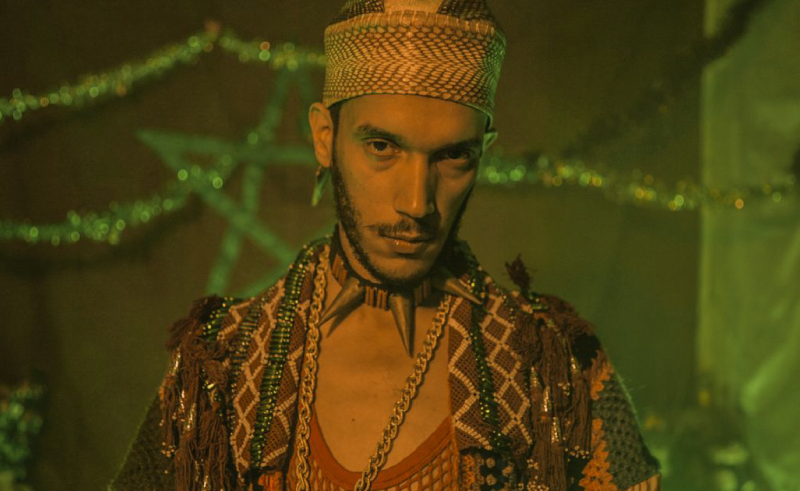
The trend of self-directed videos is only a recent
development. In most cases, an artist would direct their own videos out of
necessity, depending on the degree of their contribution to the process; or if
they have a specific idea in mind, in accordance with the song, which is becoming
more and more popular nowadays. This new element or form that ISSAM is
constantly shaping his vision and work into could very well become a speciality
in the near future, and a new model of digital media and art. That’s not to say
that the music would be obsolete; the music video itself only makes sense
because of the music. “Sometimes I like to focus on very distinct visual
elements and separate the processes,” explained ISSAM. “However, in many tracks,
I like to see how much inspiration I can extract from both musical and visual
elements inspired from the local culture.” This new vision would explain the
cohesion (not to mistaken for harmony or suitedness) between the songs and the
videos, as both are critical to the idea he’s trying to convey. ISSAM’s method,
in this context, is a development in the sense that it was the most accurate
way, as far as we know, to point to something unseen as vividly as possible.
Interesting acts such as ISSAM that make real
innovation are appearing in many parts of the Arab world. These scenes are now
coming into an interesting period; the transition into or development of a
professional platform. This is what local scenes needed to be able to compete
with international markets. This is somewhat of a hidden motif in ISSAM’s work
and what he seems to be fighting for.
For someone yet to release an album, ISSAM is doing
great. His much anticipated first, Crystal, will be decisive in the
continuation of his career. His vision is unique and accurate, reason for which
it caught on - it was a novelty. Still though, a single innovation is not
enough on a longer term. Should he make the right moves and expand his vision,
he may very well be the most relevant artist of the new scene, as it takes a
professional direction in the coming years, laying the foundation of an
industry. With the rise of labels and collectives like Adghal Records, Chbk
Music and NAAR, of which ISSAM is a member, this new mindset will enable these
scenes to break globally. In regards to the Moroccan scene, and the Middle
Eastern one as well, ISSAM exemplifies many of the changes and development they
needed, both professionally and artistically.
- Previous Article test list 1 noise 2024-03-13
- Next Article Ghalia Benali Sings the Words of Palestinian Poet Carol Sansour in New Track ‘Untied’
Trending This Month
-
Dec 24, 2025
-
Dec 23, 2025




